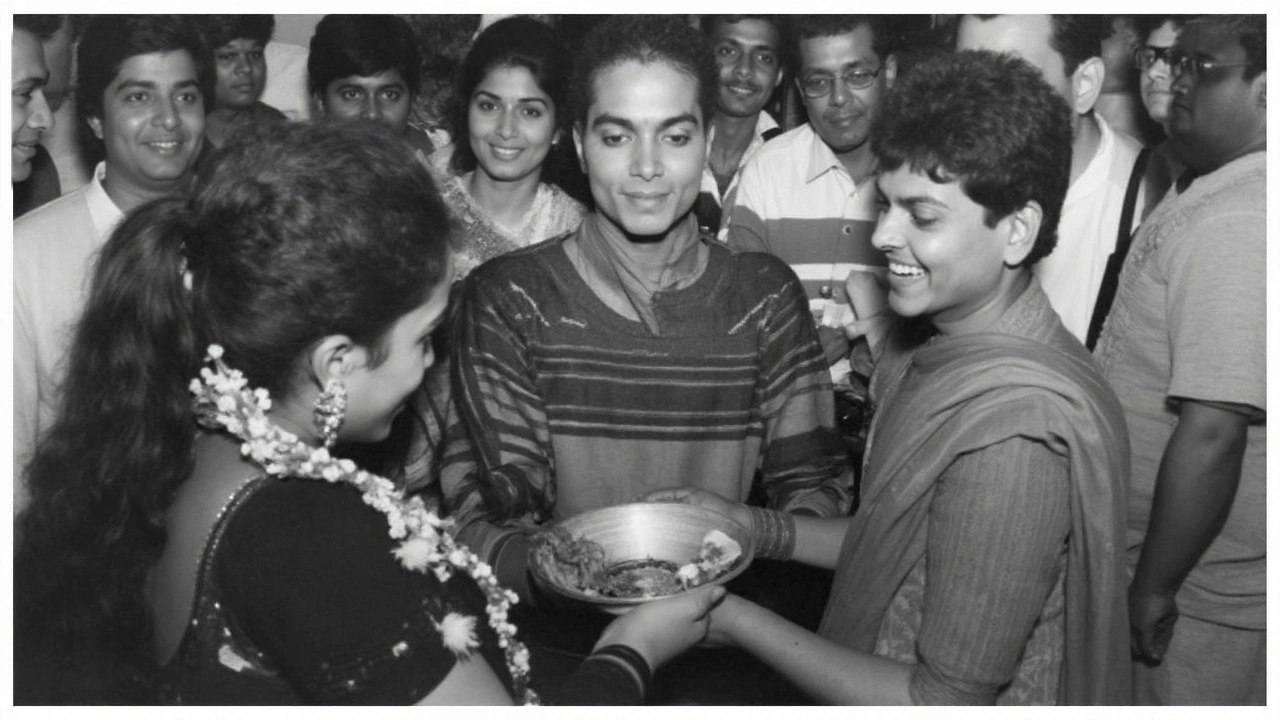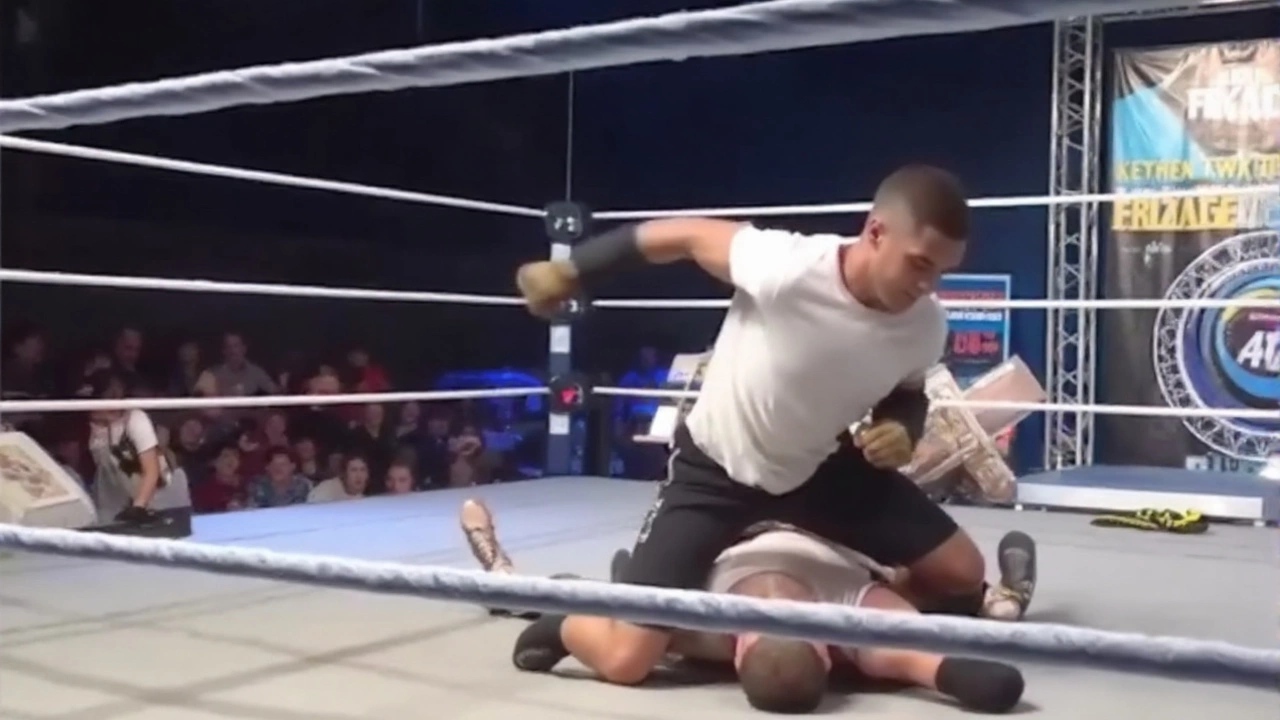A scripted match turned real—and the cameras kept rolling
A pro wrestling show in Los Angeles crossed a line on Saturday night, and the whole thing streamed live. During a KnokX Pro Wrestling event carried on the platform Kick, Raja Jackson—the son of former UFC light heavyweight champion Quinton “Rampage” Jackson—appeared to attack his opponent, Stuart “Syko Stu” Smith, long after Smith was knocked unconscious by an early move.
The bout began as a standard, pre-planned match. Witnesses say the first big spot looked like an Alabama Slam—an old-school maneuver that lands an opponent hard on their back and shoulders. That move reportedly left Smith out cold. What followed was not part of the script, according to people at ringside. Jackson kept throwing punches at Smith’s face—more than two dozen by several counts—while Smith lay motionless on the canvas.
Other wrestlers sprinted into the ring to pull Jackson away. The feed kept going, showing the scramble as officials and performers tried to shield Smith and calm the crowd. Paramedics were called. Smith, 44, was taken to a hospital with significant facial injuries. A wrestler who helped restrain Jackson told USA Today that Smith was awake and talking at the venue but had suffered broken facial bones and lost “a lot of teeth.” By Sunday, he was expected to be released, according to those close to the locker room.
Los Angeles police confirmed they responded to the venue and took a report. The department has opened an investigation, as first noted by several outlets including the New York Times and TMZ. Whether charges are coming will depend on interviews, medical findings, and a review of the footage—plenty of which exists, given the event was livestreamed and rapidly clipped and shared across social media.
As the video spread, so did the backlash. Clips shocked fans from both the wrestling and MMA worlds, who are used to staged violence and hard-hitting action—but not a one-sided beatdown of an unconscious performer. Safety is the unwritten code of pro wrestling. When that trust breaks, the curtain doesn’t just slip; it rips.
Quinton “Rampage” Jackson addressed the incident on social media, apologizing on behalf of his son. He said the chaos started with a miscommunication: before the match, someone allegedly hit Raja with a can, and he was told he could “get his payback” in the ring as part of the show. He also said his son recently suffered a concussion and was not fit to perform. That claim raises its own set of questions—about medical checks, promoter responsibility, and whether anyone in authority cleared him to wrestle.
KnokX Pro Wrestling issued a brief statement focusing on Smith’s condition: “First and foremost our thoughts and prayers are with our brother Mr. Stuart Smith. He remains a priority and we are monitoring his well being.” The promotion did not share more about how the match was planned or who was in charge of safety decisions that night.
Pro wrestling is choreographed, but it’s not pretend. The moves are cooperative, and performers rely on each other to take care of one another. A referee typically watches for distress, checks pulses and eye contact, and stops action when someone can’t defend themselves. If a talent is knocked out, the norm is to end the match and call for medical help. Continuing to strike an unconscious opponent is outside the bounds of performance and can cross into criminal conduct—especially on a public broadcast.
That public broadcast matters. Kick, a streaming platform that has courted live-event content, carried the show in real time, and the shocking footage stayed live long enough to be recorded by countless viewers. While platforms set their own moderation rules, the real-time nature of livestreaming makes it hard to prevent graphic incidents from spreading. By the time any moderation kicks in, the clip is already everywhere.
Smith’s injuries are serious, and recovery from facial fractures can take weeks or months. Dental trauma adds another layer—pain, surgery, and cost. Then there’s the concussion risk from the initial slam and the follow-up punches. Even in sports with strict protocols, head injuries are notoriously hard to manage in the moment. In independent pro wrestling, where budgets are tight and events move fast, medical resources can vary from show to show.
The father’s statement about a recent concussion puts a spotlight on pre-show protocols. Larger promotions often require medical forms, bloodwork, and clearance for performers with recent injuries. Smaller shows sometimes rely on self-reporting and the judgment of trainers or bookers. If a performer had a known head injury, any decision to let him wrestle—by himself or by the promotion—will be scrutinized.
Legal fallout is possible on several fronts. Police could pursue assault charges if they believe the punches went beyond any agreed performance. Prosecutors would consider intent, the video evidence, and the extent of injuries. Civil claims could also follow, including potential negligence claims aimed at event organizers over supervision, ringside medical support, or green-lighting a performer with a recent concussion. None of that is predetermined, and any case would hinge on what the investigation confirms.
The gray area between performance and real violence isn’t new to pro wrestling. The industry has a long memory of “shoot” moments—rare instances when staged combat turns real. Those episodes typically trigger internal discipline, public apologies, and, sometimes, blacklisting. The response here will likely be shaped by two things: the graphic clarity of the footage and the injuries documented by doctors.
Oversight varies by state and by city. Unlike boxing or MMA, which are usually regulated by athletic commissions, pro wrestling often sits outside those regimes because it’s classified as entertainment rather than a competitive sport. That doesn’t mean there are no rules—promoters often need permits and insurance—but it does mean safety standards can differ widely. This case may add pressure for baseline requirements: on-site medical staff, concussion protocols, and clearer lines of authority when something goes wrong mid-match.
Industry veterans and athletic trainers who work with wrestlers tend to repeat the same checklist: communicate, protect the head and neck, and if a performer stops responding, stop the match. The video from Saturday night shows why those norms exist. The first mistake may have been the slam on a compromised opponent; the second, far worse, was failing to stop once it was clear one performer was incapacitated.

What investigators—and the industry—will look at next
With the LAPD involved, the next steps are straightforward: gather statements, review every angle of the footage, and assess medical records. Police have already taken a report. From there, they’ll decide whether to refer charges to prosecutors. Parallel to that, the promotion will face questions from wrestlers, fans, and insurers about how the night was run.
- Who set the match plan, and did that plan include any “receipt” or “payback” spots?
- Did anyone clear Jackson to wrestle if he had a recent concussion, and was any medical screening done?
- What did the referee, producers, or agents know in the moment, and why wasn’t the match stopped immediately after the knockout?
- Was trained medical staff on site, and how fast did they reach Smith?
- What instructions—if any—did security or other wrestlers get about intervening when the punches continued?
The answers matter for more than blame. They will shape how small and mid-sized promotions think about risk. Indie wrestling thrives on fan access, improvisation, and big moments. But when improvisation blurs into real harm, everyone—from talent to promoters to platforms—faces consequences.
For Smith, the priority is recovery. Facial fractures and dental repairs can involve multiple procedures, and head trauma requires careful monitoring for symptoms that can linger: headaches, light sensitivity, memory issues. For Jackson, the questions are career-defining. Wrestling is a relationship business, and trust travels fast. If promotions believe a performer is unsafe to work with, the bookings dry up.
Rampage Jackson’s apology signals a family trying to contain the damage. But it also raises the stakes for the promotion: if there was confusion about “payback,” who gave that direction, and were there boundaries in place? In wrestling, “receipt” spots are part of the backstage language—small, controlled hits to settle a stiff shot. What happened in Los Angeles, as the video shows, went far beyond that.
As for Kick and other streaming platforms, this is another test of how to handle violent content that wasn’t supposed to be violent. Live sports and live entertainment are messy. Moderation tools struggle to keep up. The clip will keep circulating, and with it, the demands for accountability.
There’s no easy fix here, but there is a clear takeaway for people who put on shows: write the plan, check the health of your performers, empower referees to end matches, and make sure everyone knows what to do when the script falls apart. Saturday night showed what happens when those guardrails fail—and it did so in front of the world, in real time.

Arlen Fitzpatrick
My name is Arlen Fitzpatrick, and I am a sports enthusiast with a passion for soccer. I have spent years studying the intricacies of the game, both as a player and a coach. My expertise in sports has allowed me to analyze matches and predict outcomes with great accuracy. As a writer, I enjoy sharing my knowledge and love for soccer with others, providing insights and engaging stories about the beautiful game. My ultimate goal is to inspire and educate soccer fans, helping them to deepen their understanding and appreciation for the sport.
view all postsWrite a comment